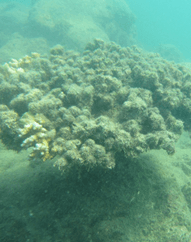Reef restoration gives hope
 The revival of a reef in South Australia provides hope for broader marine restoration efforts.
The revival of a reef in South Australia provides hope for broader marine restoration efforts.
After a prolonged period of functional extinction, the flat oyster reef along the metropolitan coastline of Adelaide has been restored.
The project began in late 2020, with the construction of 14 limestone boulder reefs. In just two and a half years, these efforts have transformed a barren marine area into a bustling hub of biodiversity.
“The rate of recovery of this particular restoration shows that even heavily degraded marine systems can retain a latent resilience that enables us to achieve rapid environmental recoveries through effective restoration efforts,” said Dr Dominic McAfee, a marine scientist at the University of Adelaide.
Flat oyster reefs were once a common feature along Australia’s southern coastline, playing a critical role in the ecosystem by providing habitat for various marine species, enhancing fish populations, protecting shorelines, and improving water quality through their natural filtration processes.
Historically, these ecosystems were devastated by destructive human activities such as seafloor dredging, which destroyed the structural complexity of habitats essential for marine life.
“Globally, 85 per cent of oyster reefs have been lost, and on many coastlines these ecosystems were near obliterated,” Dr McAfee says.
The restoration project used existing healthy ecosystems and the last remaining flat oyster reef in Tasmania as models to emulate.
“At the restored reef, we have observed densities of restored native adult flat oysters that exceeded densities observed on the Tasmanian natural reef,” Dr McAfee said.
Additionally, about 60 per cent of the biodiversity found in healthy reefs has been reestablished at the Adelaide site.
Dr McAfee believes that the success of this project can serve as a blueprint for similar marine conservation efforts worldwide.
“This rapid recovery shows we can bring back lost oyster reefs rapidly and can serve as a template for other projects on how to bring these reefs back,” he said.
The results of the reef restoration have been published in the Restoration Ecology journal.








 Print
Print